Ghostwire: Tokyo PC Performance Review featuring DLSS & IQ – 11 RTX Cards Benchmarked
After spending 18 hours over two sessions completing the Ghostwire: Tokyo main story, and being unable to tear ourselves away from the screen until it was completed, we will recommend it as a great game with a few flaws. It’s an epic universal story about family, regret, loss, and letting go told from a Japanese viewpoint that is absolutely worth playing. Its story, intense immersion, and authenic cultural representation could only have come from a Japanese studio. However, this review will focus on DLSS scaling performance because it cannot be played at 4K using maxed-out ray traced settings with excellent image quality (IQ) on any video card without it.
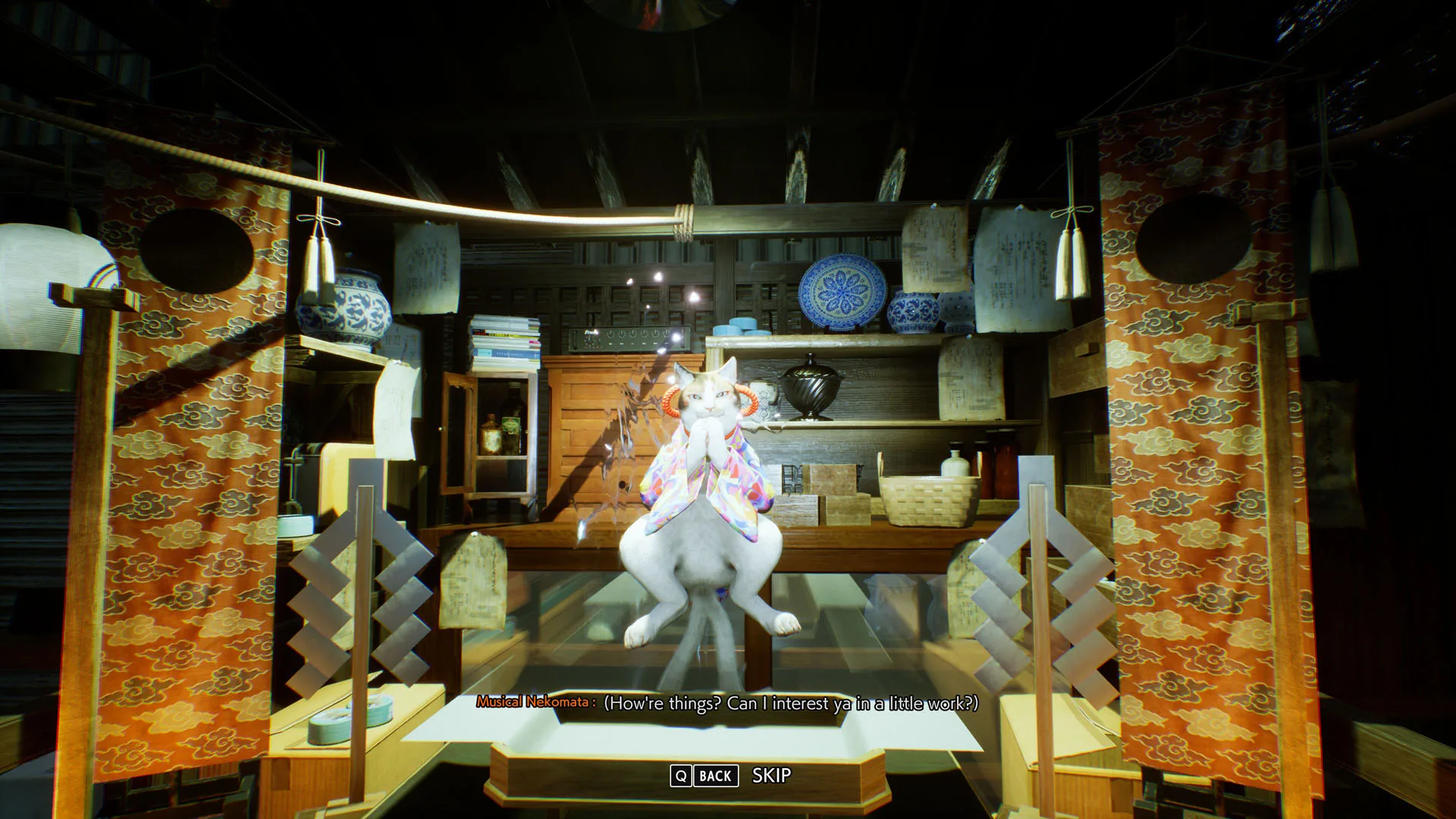
Although the game consists of typical open world fetch quests, a player is not treated like a tourist. The quests take on cultural significance, delving into mythology and religion that are a part of Japanese society and superstitions. Tokyo comes alive at night although the player is the only living human. Ghostwire: Tokyo even features Japanese audio as default by using English subtitles which add to the immersion much as watching a great Japanese film is best experienced. We did not bother with the English dub since the Japanese voice acting and emotion is top-notch.
The Ghostwire: Tokyo premise is that the city is under the control of a dangerous occultist allied with “visitors” who have caused the entire population of the Shibuya district to vanish. Playing as Akito, the player is still alive only because he has allied with a spirit detective (KK) inside him that provides supernatural abilities against dangerous ghostly and spirit foes. Akito uses a combination of upgradeable elemental powers and can even grapple onto Tengu demons to glide through the sky. The gameplay is unlike a usual FPS, since when an enemy loses most of their health, their core is exposed and the player uses takedown moves to permanently destroy them.
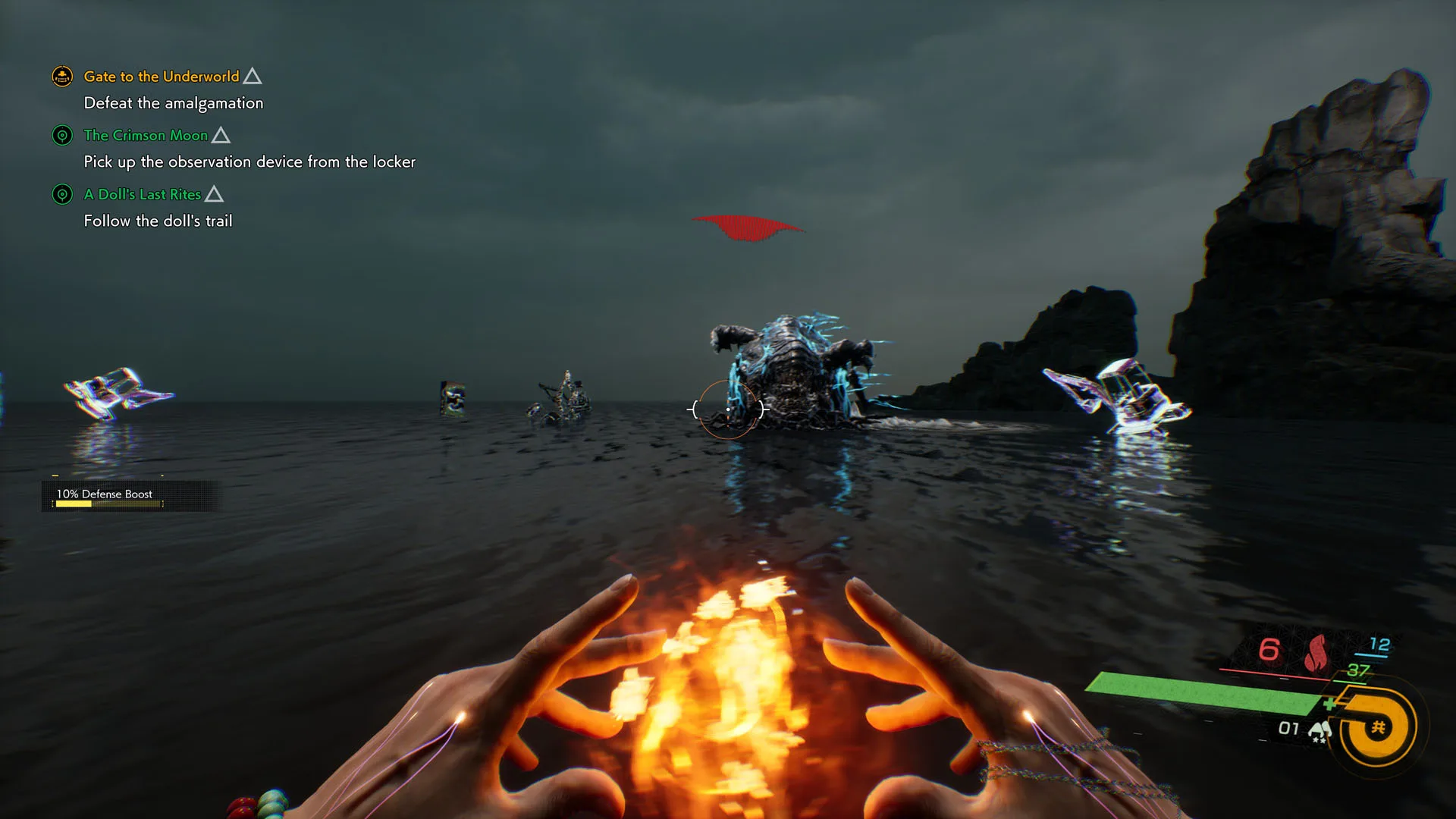
Gameplay & Mechanics
Although it is open world, Ghostwire: Tokyo uses a mist and fog mechanic to keep the player from venturing into locked areas of the map. Akito unlocks sections by completing side objectives and must purify shrines using Kuji-kiri inspired hand gestures to cast spells to disperse the fog opening up more areas of the map, while gaining access to new side quests and objectives. Various elemental powers including wind, fire, and water blades magic and upgrades are unlocked using XP, currency, and other resources. Akito may also save the souls of the vanished residents before they are permanently lost.
The side quests in the game often have some light narrative or humor attached to them that uncover the unfinished business of various spirits that are unable to move on to the afterlife. One of Akito’s side quests is to find toilet paper for one spirit locked in a bathroom stall that refuses to move on otherwise.
Ghostwire: Tokyo offers multiple difficulty settings, from a story mode to very challenging. There are varied environments that range from the streets of Tokyo at night, to the wide outdoors, and to exploring underground. There is no built-in benchmark but the game exhibits similar performance from one area to another, and there are individual settings available from the menu to fine tune performance.
An anytime save supplements autosave and is particularly helpful to proceed as there are many tough enemies and difficult boss fights to survive. The NPC enemies generally present good variety although some of them are quite repetitious with only minor variability.

Although it is a PlayStation PS5 console port, Ghostwire: Tokyo has incredibly detailed characters with awesome visuals that place it at the apex of the very best cinematic experiences. Ray traced reflections are featured and eveything reflects accurately in the puddles on the streets adding to a player’s immersion. However, a player cannot see their own reflections, so it is not the same as Control, although other NPCs cast reflections that are accurately traced as they move.
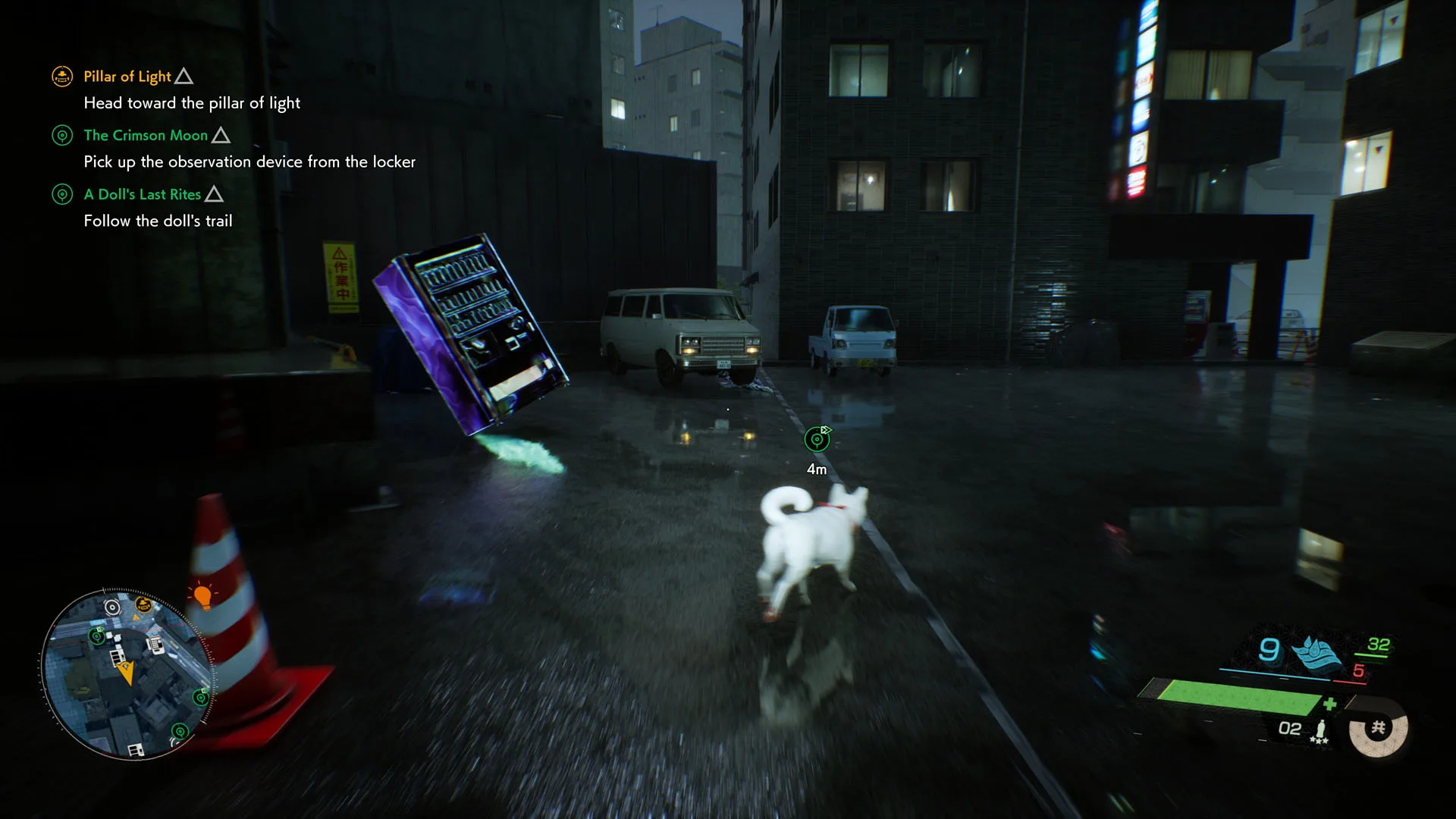
To progress, a gamer needs to be good at fighting, and there are a lot of side quests and souls to save, as well as XP to earn for character development. Great voice acting and music enhance a player’s experience. However, this review will not focus on reviewing the game; rather it will focus narrowly on DLSS as a means to increase framerates without compromising image quality as the game is impossibly demanding using maxed-out settings.
Ghostwire: Tokyo is basically a DX12 PS5 Pro version with unlocked framerates for the PC, and it looks better than most of the next generation console games. The PC version includes ray traced reflections, shadowing, great lightning and intense colors, enhanced screen space reflections, and ambient occlusion. The PC version also offers higher framerates and perhaps higher textures than the console version.
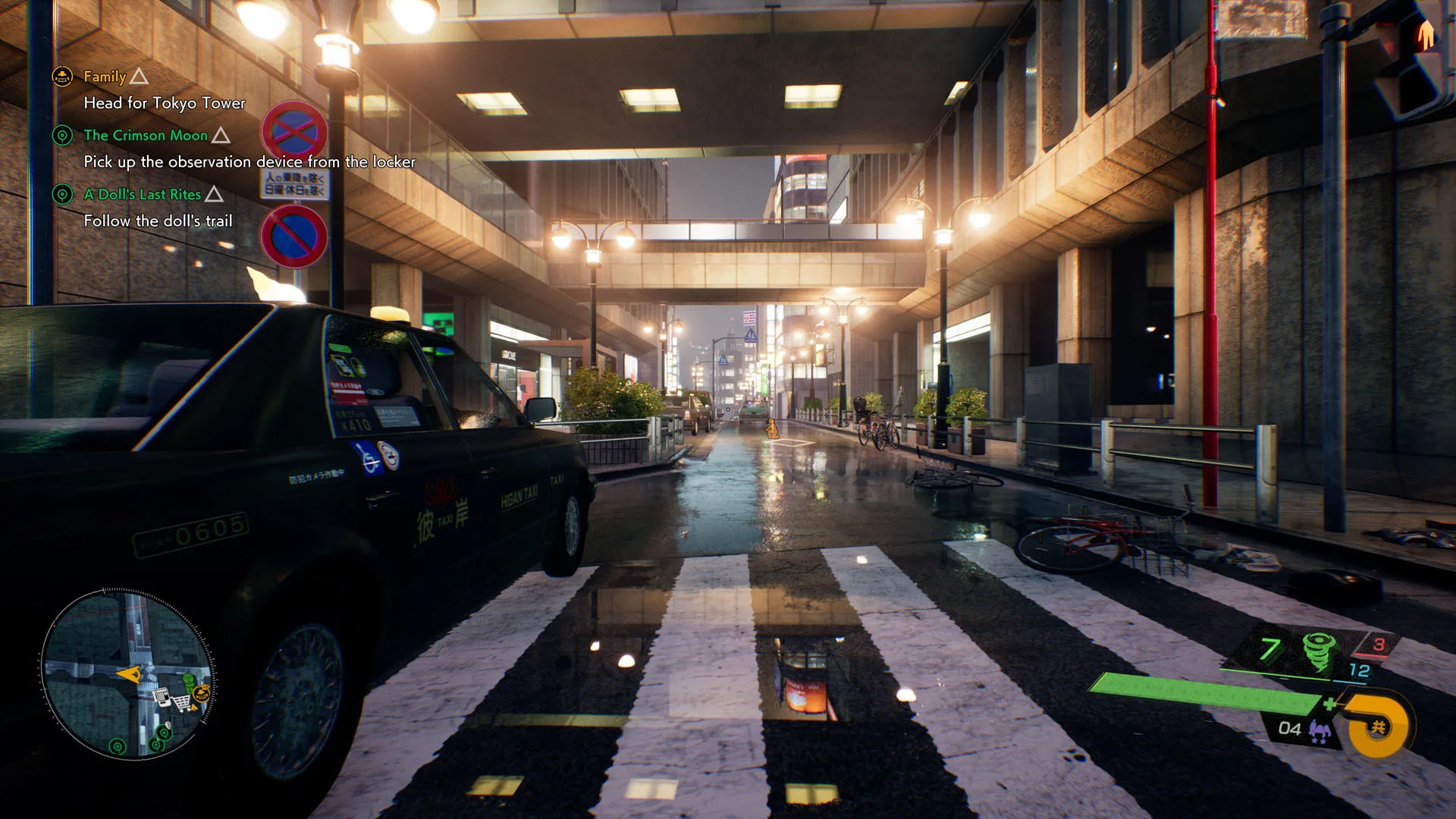
BTR’s benchmark is not only representative of the game and generally more demanding than the boss battles, but the runs vary from each other by less than one percent. The boss battles don’t seem to depend on ray traced reflections which otherwise can severely impact framerates
DLSS, Image Quality, and Performance
BabelTechReviews pre-purchased a copy of Ghostwire: Tokyo from Green Man Gaming at a 20% discount before it launched on Friday last week with no expectations. It received mixed reviews but with very high praise for its depiction of Tokyo. We started it with a very bad toothache that didn’t allow us to concentrate on anything else yet we were completely blown away by this game and could barely tear ourself away from it. The game was so enjoyable and immersive, the pain receded into the background as we finished the main storyline in two marathon sessions.
Ghostwire: Tokyo features NVIDIA’s DLSS as well as AMD’s FSR, but there is really no comparison – the DLSS images are much better with DLSS Quality being at least as good as the native 4K visuals and slightly sharper. Although DLSS exhibits more ghosting on raindrops than native 4K, the overall effect is superb and makes them look even more real.
More than three years ago, NVIDIA introduced realtime RTX ray tracing together with Deep Learning Supersampling (DLSS). To play at high settings requires the use of AI super resolution or DLSS which provides better than a game’s postprocessing AA together with improved performance. Ghostwire: Tokyo uses ray tracing and DLSS to improve performance, and we will compare the current performance and IQ of eleven NVIDIA RTX cards using the latest 512.15 driver.
Performance Options
Although Ghostwire: Tokyo is a well-done PlayStation port, it has more limited options than most games developed primarily for the PC. The game is limited to 30 FPS on the PS5 using the highest settings and ray tracing. Playing on PC gives slightly higher graphics fidelity together with a potential for higher and thus more fluid framerates. We benchmarked using maximum settings including Motion Blur (Cinematic), but we played with it on High and we also used SSAO for Global Illumination instead of the much more demanding SSGI.
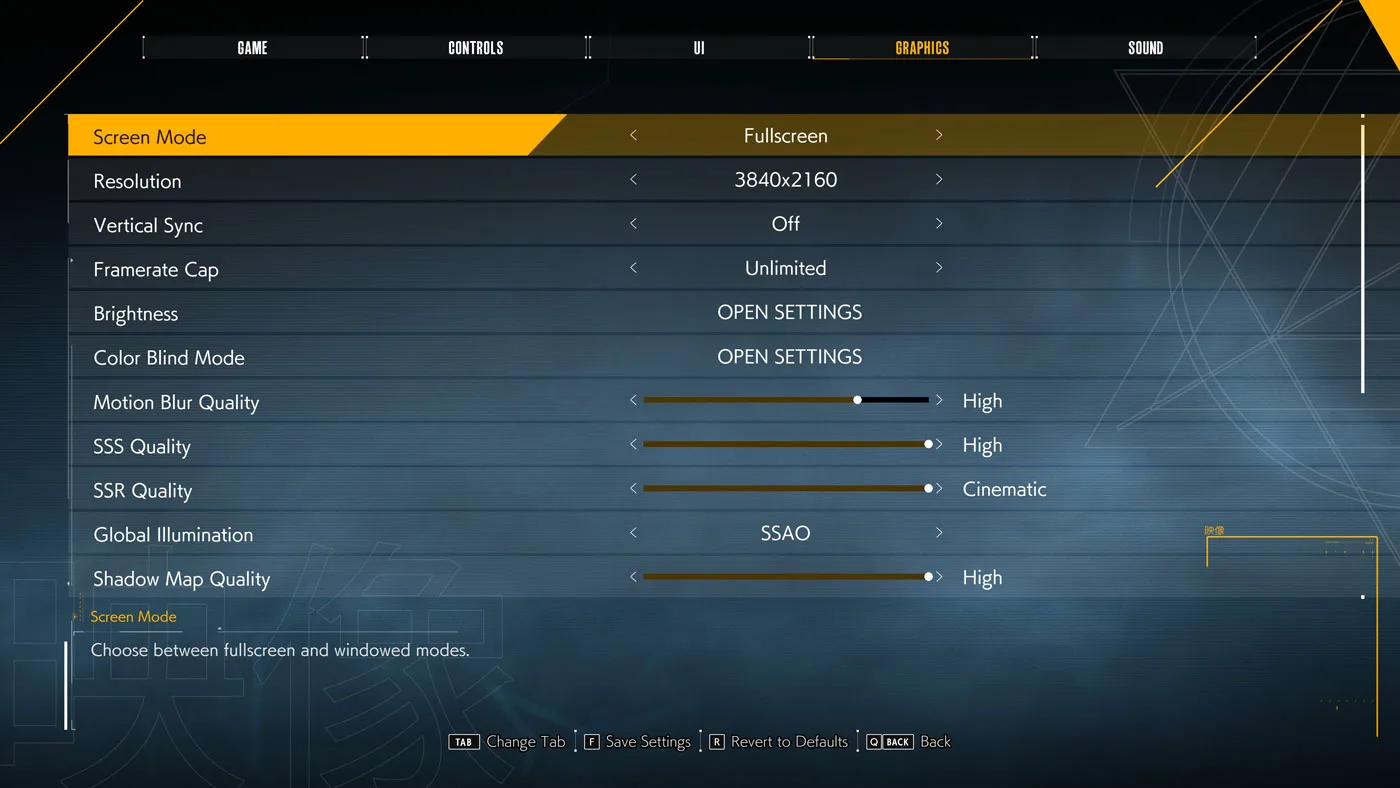

We played and benchmarked using two different displays – a 48″ LG C1 120Hz 3840×2160 display and a 32″ 60Hz BenQ 4K display. Our PC is a 12900KF Intel CPU at stock settings on an ASUS ROG Maximus Apex motherboard with T-FORCE DELTA 16GB x 2 DDR5 6400 CL40, and a 2TB 5,000 MB/s T-Force C440 NVMe SSD for C:Drive plus a 1TB T-Force A440 7,000MB/s NVMe SSD as storage for loading the game. Tokyo: Ghostwire loads very quickly from a fast SSD. We played for 18 hours using a RTX 3080 Ti Founders Edition and then benchmarked and played for many more hours benching with ten more RTX cards.
We are going to compare image quality using three levels of DLSS versus using no DLSS, and we chart the performance of eleven current NVIDIA GeForce RTX cards:
- RTX 3080 Ti
- RTX 3080
- RTX 3070 Ti
- RTX 2080 Ti
- RTX 3070
- RTX 3060 Ti
- RTX 2080 SUPER
- RTX 2070 SUPER
- RTX 3060
- RTX 2060 SUPER
- RTX 2060
DLSS
NVIDIA’s DLSS creates sharper and higher resolution images with dedicated AI processors on GeForce RTX GPUs called Tensor Cores. The original DLSS 1.0 required more work on the part of the game developers and resulted in image quality approximately equal to TAA. DLSS 2.0 and later versions use an improved deep learning neural network that boosts frame rates while generating crisper game images with the performance headroom to maximize settings and increase output resolutions. Since it uses DeepLearning, it continues to evolve and improve.
NVIDIA claims that DLSS offers IQ comparable to native resolution while rendering only one quarter to one half of the pixels by employing new temporal feedback techniques. DLSS 1.0 required training the AI network for each new game whereas DLSS 2.0 trains using non-game-specific content that works across many games.
DLSS generally offers RTX gamers four IQ modes: Quality, Balanced, Performance and Ultra Performance, These settings control a game’s internal rendering resolution with Performance DLSS enabling up to 4X super resolution. In our opinion – for Ghostwire: Tokyo specifically – the Quality DLSS IQ looks somewhat better than 4K, and even Performance DLSS is very well implemented. We would prefer to drop DLSS from Quality to Performance rather than adjust other settings or drop the resolution, and Balanced DLSS is an excellent in-between choice.
Ghostwire: Tokyo’s own anti-aliasing doesn’t address temporal anti-aliasing like DLSS does. We will next focus on image quality and DLSS on versus off, followed by benchmarking and charting DLSS performance using eleven RTX cards.
DLSS On versus Off
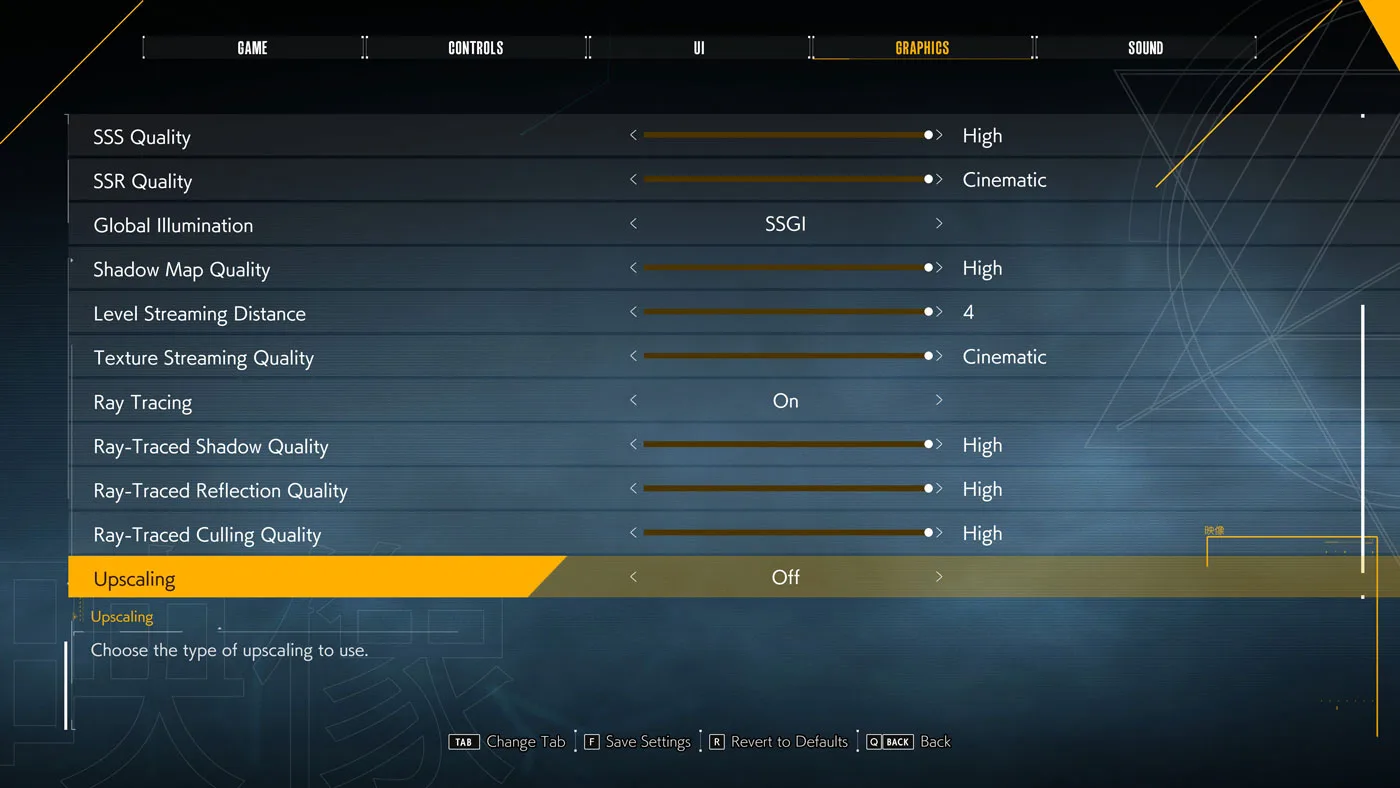
Native 4K without DLSS is 3840×2160 for both the Render and the Output Resolution and it is especially demanding on a video card using maximum settings.
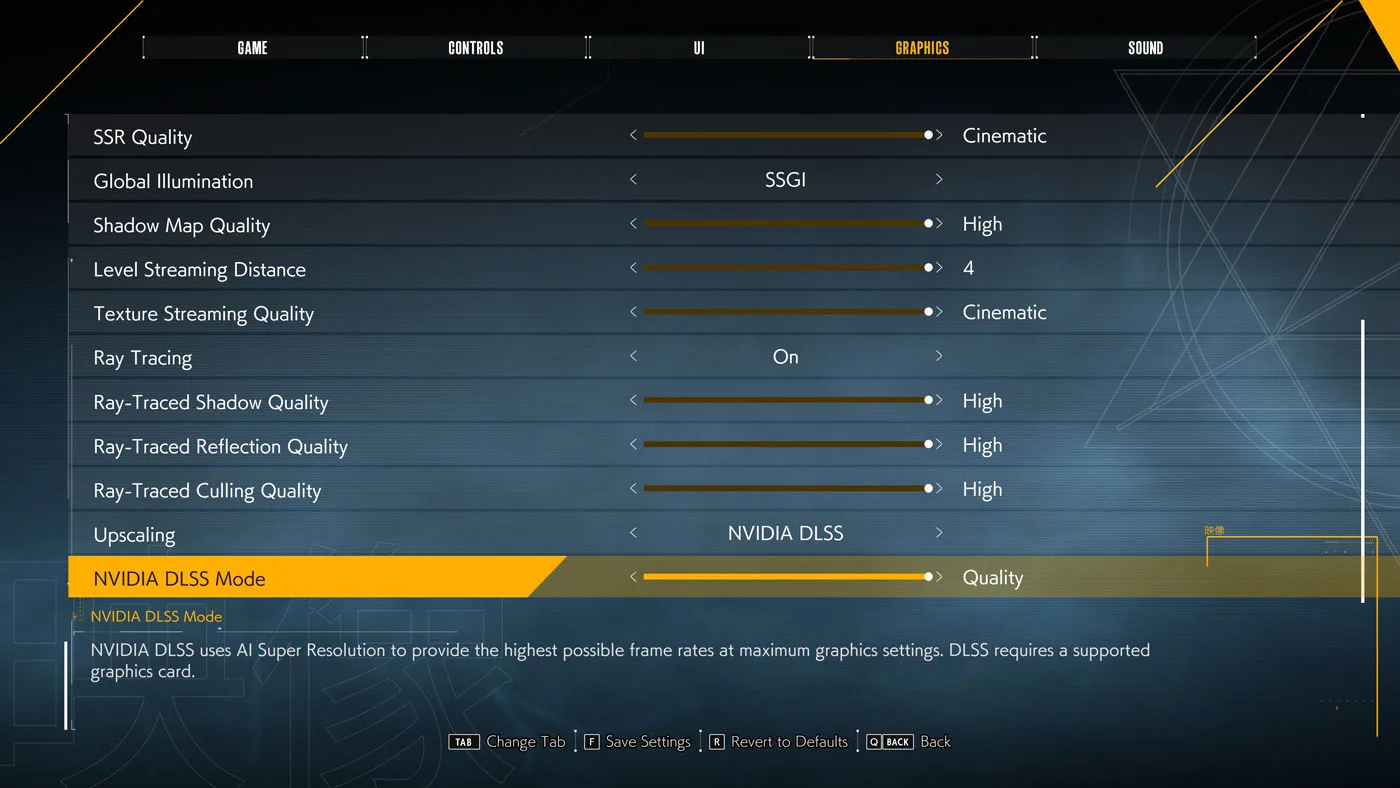
Using the magic of AI and RTX Tensor cores, Quality DLSS upscales a 2560×1440 render resolution to 4K with no loss of image quality as we shall see in the following section.
No DLSS vs. Quality DLSS
Here are mostly uncompressed JPEG 4K images images comparing No DLSS/Native (left) with Quality DLSS (right) using a slider.
[twenty20 img1=”27043″ img2=”27047″ offset=”0.5″ before=”NO DLSS” after=”QUALITY DLSS”]
We don’t recommend playing without DLSS. The DLSS image quality is equal or better/sharper than native although there are some very slight differences that can be seen with some minor DLSS specular aliasing issues visible on some surfaces.
No DLSS vs. Balanced DLSS
Balanced DLSS uses a Render Resolution of 2228×1254 to upscale to 4K and the AI must fill in more pixels than with Quality DLSS.
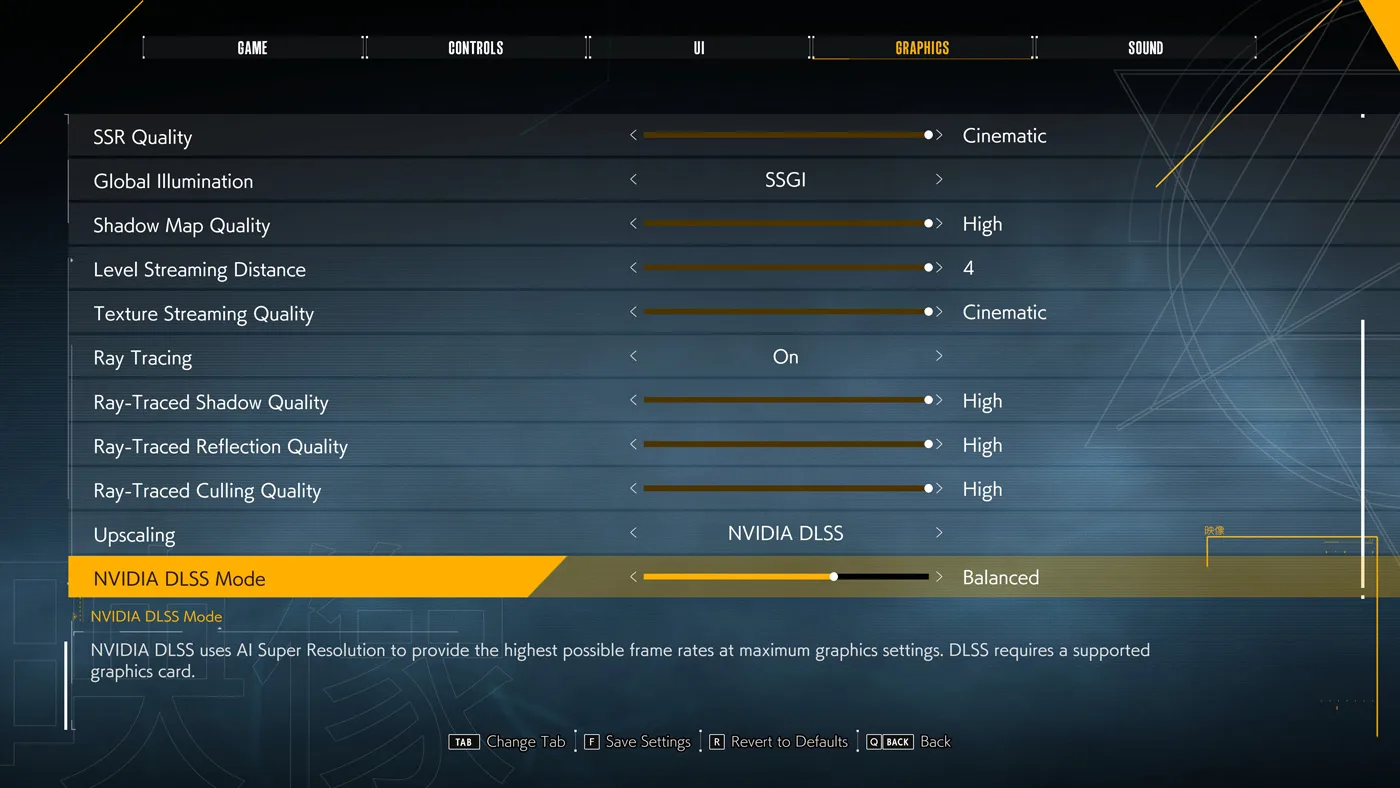
Here is 4K (native) with no DLSS on the left compared with a similar image on the right using Balanced DLSS.
[twenty20 img1=”27043″ img2=”27041″ offset=”0.5″ before=”NO DLSS” after=”BALANCED DLSS”]
Again the images are comparable although Balanced DLSS loses a tiny bit more detail than Quality DLSS.
No DLSS vs. Performance DLSS
Performance DLSS requires that a Render Resolution of 1920×1080 be upscaled to 3840×2160 which means the AI must use just one-quarter of the original pixels for its 4K reconstruction. This will result in a further slight loss of detail.

Here is the comparison of 4K (left) with Performance DLSS (right)
[twenty20 img1=”27043″ img2=”27045″ offset=”0.5″ before=”NO DLSS” after=”PERFORMANCE DLSS”]
There is a small loss of detail in some areas but the Performance DLSS upscaled image quality is still excellent and we doubt that anyone would notice the differences while actually playing the game, and they are even difficult to see in the above screenshot slider comparison.
Next, we check out the performance of eleven RTX cards using 3840×2160, 2560×1440, and 1920×1080 resolutions using up to three levels of DLSS with the goal of averaging close to 60 FPS while still using completely maxed-out settings.
Performance
Ghostwire: Tokyo is a visually beautiful but extremely demanding game using maximum settings, and its impossible to play at native 4K with maxed out settings on any current generation video card without slowdowns. Quality DLSS is our goal since it’s visuals are equivalent to not using DLSS. Balanced DLSS may requires a slight visual sacrifice, and Performance DLSS is still acceptable while gaming because most players are generally not exploring the gameworld with a magnifying glass looking for visual flaws.
Although there are very difficult boss battles with multiple enemies on screen at once, as long as a player can maintain average framerates above 55 FPS, the experience is sufficiently fluid as long as the minimums (1% lows) stay around 50 FPS. If a GSYNC or a GSYNC compatible display is used, it is generally not a problem for the lows to dip occasionally into the upper-40s FPS. Below that, fluidity may be compromised, and it is better to lower the graphics settings or use a lower quality DLSS setting. Ultra Performance DLSS is not recommended unless framerates cannot be increased by any other method – it is better to lower settings first as it was primarily developed for 8K gaming.
Using Ghostwire: Tokyo’s highest settings, we compare performance without DLSS versus Quality, Balanced, and Performance DLSS using eleven current RTX cards at 1920×1080, 2560×1440, and 3840×2160.
For Better Performance Consider SSAO Instead of SSGI
SSGI has the highest visual fidelity for ray tracing. However, it takes a solid hit over using SSAO and may not even be noticeable when traversing Tokyo. It is up to the player to decide if they want maxed out settings at all costs or will settle for something slightly “less perfect” visually.
Here are two screenshots comparing SSGI with SSAO using DLSS Quality at 4K:
[twenty20 img1=”27047″ img2=”27049″ offset=”0.5″ before=”SSGI” after=”SSAO”]
The ray traced lighting is more perfectly rendered using SSGI over SSAO. Is it enough to lose performance? Each gamer will have to decide about the visual tradeoff for performance.
All of the following charts show average framerates (FPS) in Bold and 1% FPS percentile minimums next to them in slightly smaller italized font.
Here is RTX 3080 Ti performance using SSGI compared with performance using SSAO.

Using SSAO instead of SSGI makes approximately a 10% improvement in performance and it scales similarly for all RTX cards tested. We played the game using SSAO and did not notice significant enough visual diffencies while playing to use SSGI. However, the following benchmarks use all settings fully maxed-out including SSGI.
4K Video cards – RTX 3080 Ti & RTX 3080
Only two RTX cards can generally play at maximum settings using DLSS at 4K.
The RTX 3080 Ti is a no-compromise video card that provides the best 4K Ghostwire: Tokyo experience. It absolutely can not handle maxed out 4K settings without using DLSS. Fortunately, DLSS scales superbly in this game.
A 4K gamer may choose to use Quality DLSS but must accept a framerate hit without some other setting compromises. We played at 4K but used SSAO instead of SSGI using an RTX 3080 Ti FE and managed very well using Balanced DLSS and G-SYNC displays with drops to about 50 FPS that did not impact our gameplay fluidity even during the most demanding boss battles.

If a RTX 3080 Ti gamer chooses 1440P, DLSS Quality is still a must.
At maxed out 4K, the RTX 3080 averages above 60 FPS with DLSS Performance but drops into the upper-40s FPS for the 1% minimum lows. 1440P is the ideal target resolution for this card using DLSS Quality.

1440P Video Cards – RTX 3070 Ti / RTX 3070 / RTX 3060 Ti / RTX 2080 Ti / RTX 2080 Super
The following five video cards perform well at 1440P.
The RTX 3070 Ti cannot play at maxed-out 4K without DLSS Performance. However, DLSS Quality allows for a high quality maxed-out 1440P experience with excellent averages and drops into the upper-50s.

The RTX 3070 performs below the RTX 3070 Ti in Ghostwire: Tokyo, and although it cannot play well at 4K/maxed, the same recommendations for 1440P apply as above.

The RTX 3060 Ti requires Balanced DLSS to play smoothly at 1440P.

The last generation flagship RTX 2080 Ti is not recommended for 4K without dropping settings, but it can manage 1440P with DLSS Quality if the player doesn’t mind framerate drops into the upper-40s. The experience is acceptable, but it may be better to use DLSS Balanced or Performance.

The RTX 2080 Super performs below the RTX 2080 Ti in Ghostwire: Tokyo and we recommend Performance or Balanced DLSS for 1440P although Quality may be acceptable.

1080P – RTX 2070 Super / RTX 3060 / RTX 2060 Super / RTX 2060
The following four cards work best with 1080P although the fastest two can just manage 1440P.
The RTX 2070 Super plays acceptably at 1440P with Performance DLSS. However, it would also be an excellent 1080P card using DLSS Quality for those who prefer higher framerates.

The same applies to the RTX 3060 as above.

The RTX 2060 Super performs below the RTX 3060 and should primarily be used for 1080P.

The RTX 2060 is the entry level RTX card and it is best suited for 1080P using Performance or Balanced DLSS as Quality performance is somewhat marginal.

DLSS makes a huge difference to the playability of Ghostwire: Tokyo at the highest visual quality settings, and DLSS Quality has no IQ disadvantages whatsoever while Balanced and Performance DLSS make little to no practical visual differences while gaming. It is highly recommended!
DLSS gains a large percentage of performance over not using it, and it looks at least as good depending on the level. It is really “free performance” without compromise. We see a RTX 3080 Ti playing Ghostwire: Tokyo fluidly with maximum settings at 4K using Performance DLSS whereas it’s a slideshow without it. DLSS isn’t perfect, occasionally adding some very minor artifacting and potentially losing a little fine detail, but overall all three DLSS settings look great with the camera in motion.
Any algorithm that doesn’t use AI such as FidelityFX Super Resolution on its highest setting simply cannot match the image quality of Quality DLSS and there is every good reason for a GeForce RTX gamer to use DLSS for Ghostwire: Tokyo.
Conclusion
Ghostwire: Tokyo is an immersive, outstanding, and really fun game that gives a great cinematic experience while telling an extraordinary story. We are especially impressed by its visuals coupled with the large free performance increase that DLSS brings for RTX gamers.
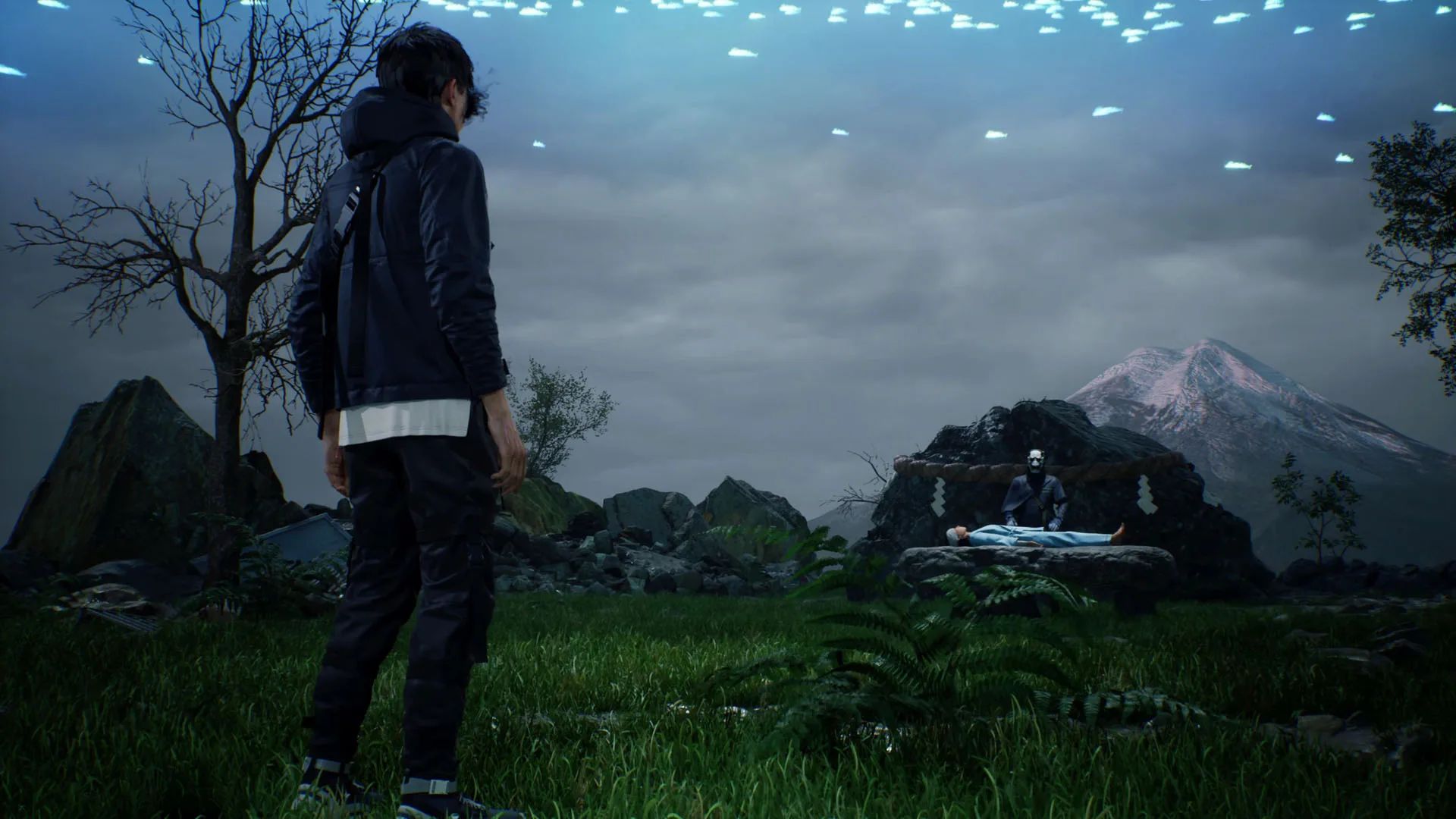
If you’re as fascinated by Japanese culture as much as this editor and wish to see it authentically, accurately, and lovingly represented, Ghostwire: Tokyo is a must-play game. And if you are looking to play the game with the best framerates and the very highest image fidelity, then choose DLSS. Ghostwire: Tokyo is the kind of deeply immersive game that makes a player forget everything – food, chores, work, and even pain. It is highly recommended!
Rodrigo is hard at work on his GeForce 512.15 driver performance analysis. We also have a performance review on deck of the first virtual reality (VR) game to feature both DLSS and ray tracing, followed by a super-fast 7,400MB/s SSD ready for review. Stay tuned to BTR!
Happy Gaming!
Comments are closed.